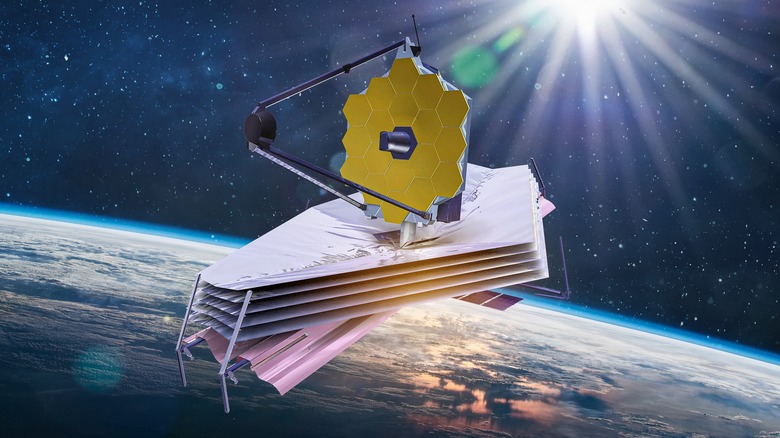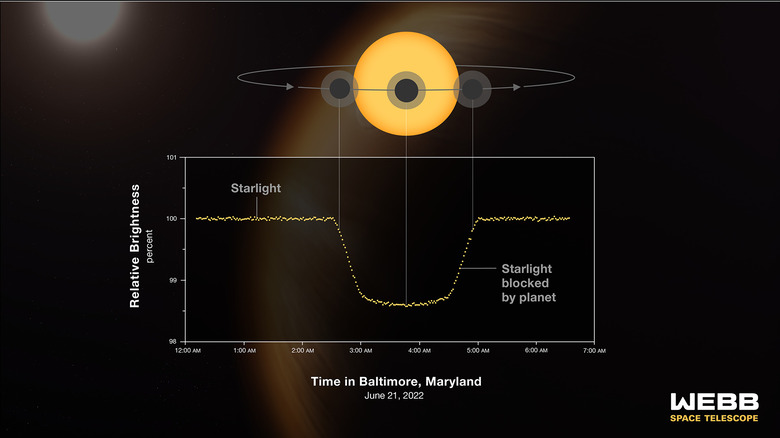Here's How James Webb Telescope Will Detect Exoplanets
One of the big highlights of the release of the first science data from the James Webb Space Telescope was the spectrum of an exoplanet atmosphere, showing how Webb's instruments can see what these distant atmospheres are made of. This is a big step forward in exoplanet research and could even help in finding potentially habitable worlds. Even better, the method used to study this exoplanet can be used to detect and examine other exoplanets, too.
Planets might seem big to us, but in fact, they are pretty tiny in the galactic scheme of things. Unlike stars, which are much larger and give off their own light, planets are small, dim, and difficult to see. This means that researchers using telescopes like Webb can very rarely see a planet directly; instead, they have to infer the presence of a planet by seeing how it changes the environment around it (via The Planetary Society).
One way to spot an exoplanet is to look at the star it orbits around, called its host star. If we point a telescope at a star, we see the light it gives off. Sometimes, the amount of light we see from the star will drop very slightly when a planet passes in front of it. If we see this drop in brightness on a regular timescale, we can infer that there is a planet there and it is causing the drop in brightness as it orbits the star. This is called the transit method, and it is how telescopes like the now-retired Kepler Space Telescope or NASA's current Transiting Exoplanets Survey Satellite (TESS) spot exoplanets.
Using James Webb to search for exoplanets
James Webb will be able to observe these transits, too, which is one way it will study exoplanets. There was even an example of transit data in the first science data release, showing how the light from star WASP-96 dipped in brightness as the planet WASP-96 b passed in front of it (via Webb Space Telescope). The data was collected using Webb's Near-Infrared Imager and Slitless Spectrograph (NIRISS) instrument, using its Single-Object Slitless Spectroscopy (SOSS) mode. This mode can study exoplanets by de-focusing the star, which is very bright, and spreading the light across pixels so that the effects of the relatively tiny planet can be observed (via NASA).
It takes some time for the planet to pass across the face of its star — two and a half hours in the case of WASP-96 b — during which time the telescope took measurements every 1.4 minutes. The instrument collects data for several hours before and after the transit too. The difference caused by the planet to the brightness of the star is very small at less than 1.5 percent, but because the instrument is very sensitive, it can detect these small changes.
From this data, scientists can learn more about the exoplanet, such as figuring out its size and orbital properties. The transit method is just one way of identifying and studying exoplanets. Webb will work with ground-based telescopes to discover new exoplanets, as well, and to learn about their mass using the radial velocity method — it will even be able to directly image some exoplanets using a technique called coronagraphy (via NASA).

